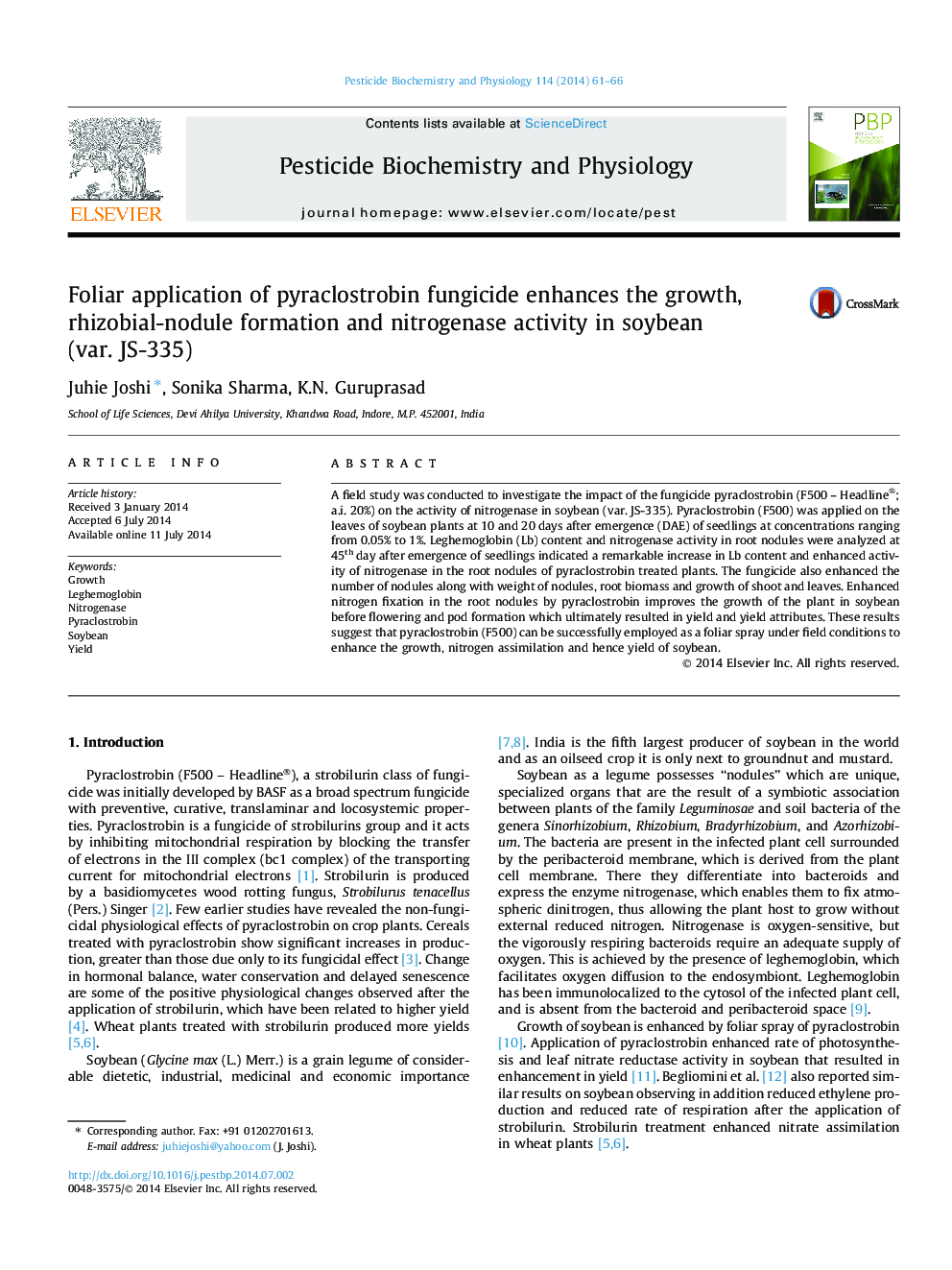| Article ID | Journal | Published Year | Pages | File Type |
|---|---|---|---|---|
| 2009242 | Pesticide Biochemistry and Physiology | 2014 | 6 Pages |
•Growth, biomass accumulation and yield are up-regulated by pyraclostrobin (F-500).•First report of enhanced nodulation in soybean by pyraclostrobin (F-500).•First report of enhanced nitrogen fixation in soybean by pyraclostrobin (F-500).
A field study was conducted to investigate the impact of the fungicide pyraclostrobin (F500 – Headline®; a.i. 20%) on the activity of nitrogenase in soybean (var. JS-335). Pyraclostrobin (F500) was applied on the leaves of soybean plants at 10 and 20 days after emergence (DAE) of seedlings at concentrations ranging from 0.05% to 1%. Leghemoglobin (Lb) content and nitrogenase activity in root nodules were analyzed at 45th day after emergence of seedlings indicated a remarkable increase in Lb content and enhanced activity of nitrogenase in the root nodules of pyraclostrobin treated plants. The fungicide also enhanced the number of nodules along with weight of nodules, root biomass and growth of shoot and leaves. Enhanced nitrogen fixation in the root nodules by pyraclostrobin improves the growth of the plant in soybean before flowering and pod formation which ultimately resulted in yield and yield attributes. These results suggest that pyraclostrobin (F500) can be successfully employed as a foliar spray under field conditions to enhance the growth, nitrogen assimilation and hence yield of soybean.
Graphical abstractFigure optionsDownload full-size imageDownload as PowerPoint slide
